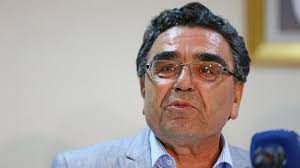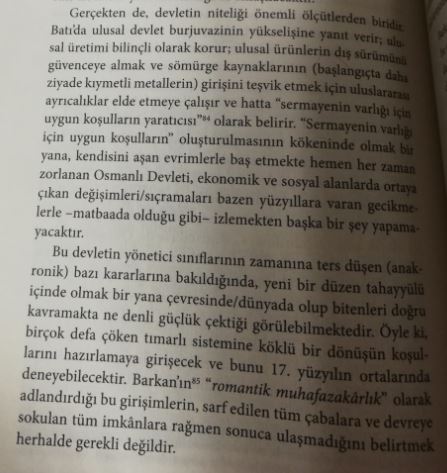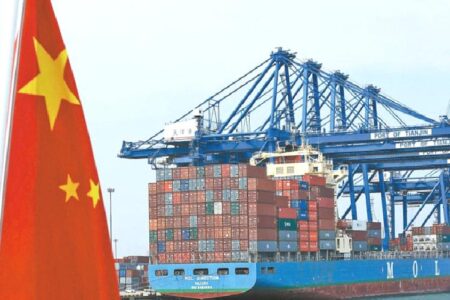From Feudalism to Capitalism From Ottoman to Turkey (II)
Part I

oguz oyan
2-The dissolution and transformation of the Ottoman agricultural regime (Structural Limits of Evolution to Capitalism)
This section, which summarizes the process from the middle of the 16th century to the beginning of the 19th century, describes the transition from conditional land ownership to private ownership (although not considered capitalist) and the process in which foreign powers gradually began to be decisive on the Ottoman Empire. In this section, our teacher discusses and analyzes one of the most complex periods of the Ottoman Empire.
Oğuz Oyan, who started the dissolution process with the question of why the timar system in Ottoman society was corrupted, relates that the rapid expansion of the Ottoman Empire reached its peak and the wars are now inefficient for military organization (both the long wars period begins and the booty decreases).
The fact that the West is ahead in terms of warfare justifies the need to exclude sipahis from the system and create more resources for janissaries. While the sipahi are fed through the timar system, the janissaries are paid directly from the centre. Berkes Hodja states that “to solve the military problem, the technology problem must be addressed, and to solve it, the economy and finance problems must be addressed, and this causes a vicious circle”.
Didn’t the central government have money? There was, but there were 2 big holes.
The wages of the increasing number of civil and military bureaucrats and the expenditures of the palace.
Quote from Braudel “The luxury of the palace was unheard of” (page 186)
The process was at the center of the factors that prepared the dissolution of the rural-military regime. This process, in which the whole burden was placed on the people, was also experienced in 14th century Europe, but it is stated that the solutions there led to the decline of the feudal system, not its consolidation. As can be expected, the opposite is happening in the Ottoman Empire. The feudal system is getting stronger.
The State-i-Aliyye, which is stuck in money, puts the tax farming system on the table. While the main purpose of the tax farming system is the expansion of the economic and political sphere of the state, the opposite happens. Central indirect taxes are introduced into the system under the name of Avarız taxes and a copy of this is created in the provinces. It is important to note that the state did not hesitate to milk the villagers while complaining about the tax farmers.
In addition to all these, the footsteps of the Celali Revolts began to be heard when inflation, the constant depreciation of the value of money, famine, etc. were added.
ruling classes; They were milking the reaya, establishing farms and rebelling against the state. Our teacher sees this as the period when the farms began to come to light. Farms mostly consisted of peasant couples (even fiefs) seized by usury, and were backed by the military-fiefs’ forces of the past. Farms turned to animal husbandry because it brought money, which was eliminating agricultural lands. Akdag says that “these destructions have led to a decline in the position of the peasantry” (Page 202)
What was the poor reaya doing?
Reaya working in the agricultural sector, where there was no technical progress, had to pay both avarız and salma. Of course, these are highlighted because they are the heaviest taxes. These are not the only taxes they pay. 🙂
The Great Escape was beginning with the Celali revolts. Similar to the great escape, the 14th century also happened in Germany, but this event happened very quickly (10-20 years) in the Ottoman Empire.
THE OTTOMAN IS LIKE THE CRISIS OF FEODALISM IN EUROPE TWO CENTURIES SEPARATELY.(page 210)
The monopolistic dominance of the Ottoman ruling (state) class over the social surplus product was broken, and wealth began to accumulate in the hands of some elements from the social classes outside this class. The concrete indicators of this deterioration in the classical structure of the Ottoman despotic system are the emergence of new formations of “power-wealth” such as the aghas, feudal lords, and notables within the system, and their participation in the process of exploitation of the people. In this period (in the 17th and 18th centuries), in addition to the monetary wealth accumulated in the high strata of the state, such as bribery and slave trade, a very significant amount of “monetary wealth” was also obtained from the works such as tax farm, manor house, mukataa business, foreign trade, usury, money changer. had accumulated.(Source)
Marx lists the necessary elements for the transformation of monetary wealth into capital as usury, trade, the city system and the state treasury. In the Ottoman Empire, there is only usury at this stage.
You may think that farms are a source of wealth, but the state-i-aliyya may come and appoint a trustee (confiscate) tomorrow, or you may be the subject of looting tomorrow.
While the state was expected to follow mercantilist policies that would pave the way for capital accumulation, the opposite was done in the Ottoman Empire. Far from being at the root of the creation of favorable conditions for the existence of capital, it took the opposite position.

From Feudalism to Capitalism, From Ottoman to Turkey Oguz Oyan page 214
The injection of large monetary fortunes into the system and the influx of newly dominant social elements into the countryside had led to an evolution towards capitalist production, but the objective and subjective preconditions for the transformation were absent. (page 216)
Where was the system stuck?
In any case, the fact that the accumulated cash assets were invested only in landed property was the first and main obstacle to the movement of money. As can be seen in the excerpt below, the areas where the accumulated money capital could go were limited.

From Feudalism to Capitalism, From Ottomans to Turkey Oguz Oyan page 222
What we call foreign powers includes capitulations and all concessions granted to foreign countries. Due to these privileges, the foreign trade deficit will begin to increase. Bans will be imposed on exports, which will backfire and increase imports even more. (it will also increase smuggling)
In an environment where guild structures are closed to themselves and suppressed by the state, they cannot develop new techniques, and they will melt away in the face of imports.
As can be seen, capital was not/could not accumulate in the non-agricultural sector.
As for agriculture, it is obvious that there is low productivity in agriculture. More importantly, those who run the farms are not making new investments in these structures.
Although not directly as in the West, the small rural producer is dispossessed, but there was no industry in the city where this producer would go. The situation of the guilds is also clear, the small structures did not have the power to employ the population coming from the provinces anyway.
So where would this crowd go? He would either be a punk or be a sekban. (Jalali rebellions)
Hodja concludes: “The tripartite division of labor established between agriculture, manufacture and international trade in the West was blocked in the Ottoman Empire”. (page 233)
Let’s go back to iltizam:
- feudal overexploitation
- farms
- The process to the mansion
- The structure of the army is changing.
As the central authority weakened, the composition of the army also changed.
Berkes quote is important here
“During the 18th century, the Empire’s military might during the war was now a concentrated army available from different sources” (page 244)
The empire came to an important point with the Sened-i-İttifak (1808). Even though some see this as a feudal crumbling, Oğuz Oyan MUST ACCEPT THE RIGHTS AND LAW AND AUTHORITY OF CENTRAL POWER OF CENTRAL POWER POWERS THAT HAVE GAIN POWER AND AUTONOMY FOR LONG TERMS OUT OF CENTRAL CONTROL.
As a result, the dynamics of transition from feudalism to capitalism will not become clear until the Tanzimat. Sened-i-İttifak will be the document that the old era is over. With the strengthening central power, the political, legal and partially economic infrastructure of capitalist development, albeit loosely, will begin to be prepared.
However, a step has been taken in a new historical environment in which no development can occur without the involvement of external dynamics.
Associate Professor Data Man







